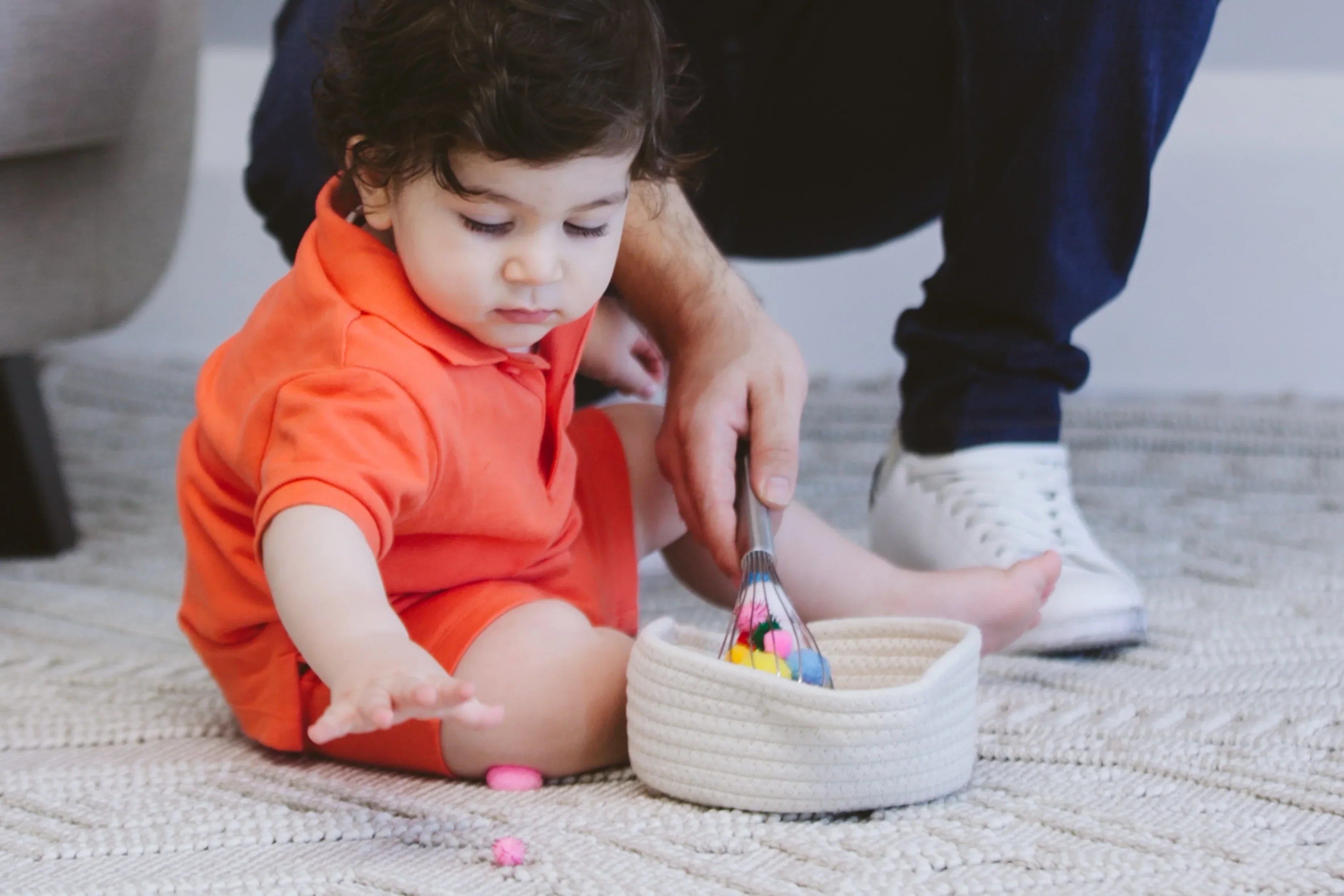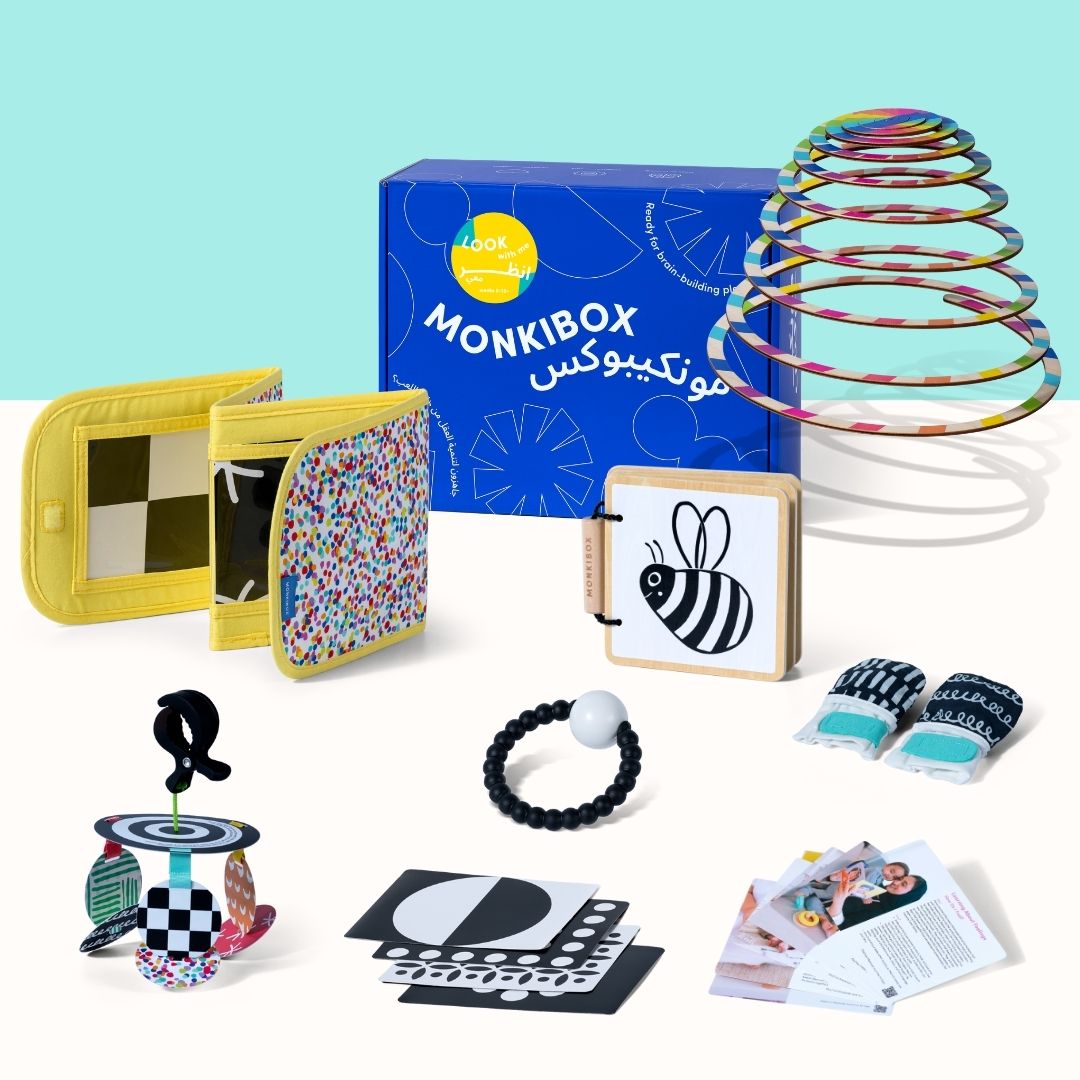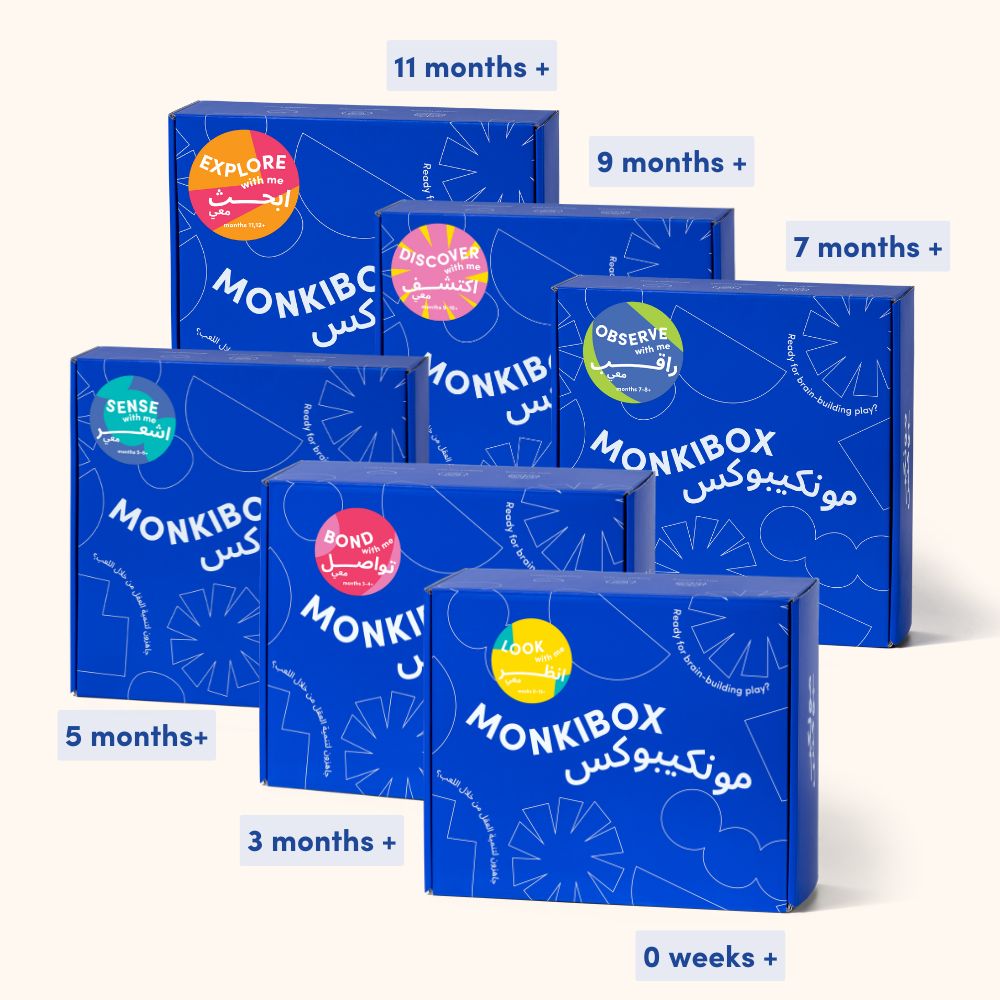Toddlers are naturally curious and love to explore their world, often gravitating towards small objects. While this stage is crucial for developing fine motor skills and cognitive abilities, it’s also important to ensure their safety during play.
Expert Tips for Safe Play with Small Objects:
-
Introduce Tactile Toys:
Provide your toddler with a variety of tactile toys that are safe for exploration. Toys like play dough, sand, or sensory bins filled with larger items can satisfy their curiosity while reducing the risk of choking. These activities also support the development of fine motor skills and sensory processing. -
Use Sticks in a Container:
A safe and engaging activity involves placing colored craft sticks into a container with small holes. This enhances fine motor skills and concentration while allowing your toddler to explore objects of a manageable size. The Poking Box from the Think With Me Box is an excellent tool for this type of activity, offering a controlled environment for exploration. -
Repurpose Plastic Water Bottles:
Old plastic water bottles can be repurposed for safe play. Encourage your toddler to fill the bottle with larger items like rocks, pencils, or small toys. This activity not only promotes fine motor development but also teaches concepts like volume and sound. Ensure the bottle cap is securely fastened to prevent spills. -
Supervise but Allow Exploration:
While it's essential to supervise your toddler during play with small objects, it's equally important to give them space to explore independently. Over-managing their activities can stifle curiosity and inhibit learning. Allow them to experiment under your watchful eye, stepping in only if they engage in potentially unsafe behavior, like putting objects in their mouth. -
Create a Safe Environment:
Ensure that the play area is free from hazards like choking hazards or small objects that could easily be swallowed. Designate a specific area for small object play and make sure it's child-proofed, with any dangerous items out of reach. You can also use larger versions of toys or objects that mimic smaller items to give them the experience without the risk. -
Rotate Toys and Objects:
Keep the play experience fresh and engaging by rotating the objects your toddler plays with regularly. Introducing new textures, shapes, and sizes keeps their interest high while continuing to develop their fine motor skills. This also allows you to control the environment, ensuring that each item is safe and appropriate for their developmental stage.
By following these expert-driven tips, you can ensure that your toddler's exploration of small objects is both safe and educational. This stage of play is crucial for their development, helping them build the fine motor skills and cognitive abilities they'll need as they grow.





